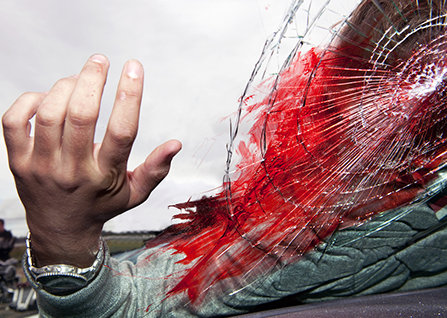Drinking and Driving Is Deadly

Many of us who attended public schools participated in a school seminar which highlighted the dangers of drinking and driving. I remember many moons ago, in 2005 when my public school had a former police officer come and tell his story. As I recall the officer telling it, one cold December morning at around 12:30 a.m., the officer was called to a scene of a terrible car accident which was believed to involve a drunk driver.
The officer responded and upon arriving at the scene it occurred to him that one of the vehicles belonged to his seventeen-year-old daughter, Rachel. The vehicle was flipped upside down in a ditch and Rachel, who wasn’t wearing a seatbelt was partially ejected from the vehicle and crushed as the vehicle flipped. The officer described holding his daughter’s bloody and mangled body for the last time as other officers pulled him away from the scene and the medical team secured her body in a black body-bag.
The officer told this story while crying and upon finishing his story, he begged for us to learn from Rachel’s mistake and never put our parents in such a situation; the officer thanked us for listening and walked out of the auditorium.
Crash statistics in America
Alcohol consumption plays a major role in motor vehicle crashes. According to the CDC, one-third of the crash deaths in the U.S. involved drunk driving and almost 1 in 3 of those also involved speeding. In 2015, at least some measurable level of blood alcohol concentration (BAC) was reported for 70% of fatally-injured passengers and vehicle drivers. Rhode Island reported BACs for a record 95% of fatally-injured passengers and vehicle drivers, while on the other end of the spectrum, Mississippi reported BACs for only 47%.
Alcohol and Drug Use
Per the CDC, in 2014, 9,967 people were killed in alcohol-impaired driving crashes, accounting for nearly one-third (31%) of all traffic-related deaths in the United States. Among the 1,070 traffic deaths involving children aged from 0 to 14 years in 2014, 209 (19%) involved an alcohol-impaired driver. Even worse, among the 209 child passengers aged 14 and younger who died in alcohol-impaired driving crashes in 2014, over half (116) were riding in the vehicle with an alcohol-impaired driver. Studies show that drinking while driving increases the likelihood of being in a motor vehicle accident and the likelihood of serious injury or death occurring. The risk of being involved in a crash increases significantly above a blood alcohol concentration (BAC) of 0.04 g/dl. Drugs other than alcohol (legal and illegal) are involved in about 16% of motor vehicle crashes.
Prevention Solution
First, maintain consistent blood alcohol concentration (BAC) regulations and maintain the minimum legal drinking age of 21. Nationwide, it is illegal to drive with a BAC at or above 0.08%. For people under 21, “zero tolerance” laws make it illegal to drive with any measurable amount of alcohol in their system. These laws save thousands of lives and have improved the safety of the highways since their implementation.
Many communities undertake mass media campaigns and school-based instructional programs to combat motor vehicle accidents. Using these methods integrated together with laws has already helped reduce car accident rates. Narconon Arrowhead, drug and alcohol treatment center in Oklahoma has an education program that effectively teaches anyone about the truth about drugs and alcohol. Anyone wanting to host a school, church or community seminar using Narconon Arrowhead’s drug and alcohol education program should call 877-508-8151.
Lastly, should you or someone you know need drug or alcohol treatment, refer them to Narconon Arrowhead which has been Narconon’s leading drug rehabilitation center for nearly half a century, and has proven time and again that if a person can identify and overcome the initial, underlying problems that lead to their addiction, they can ultimately regain their self-respect and self-control.


